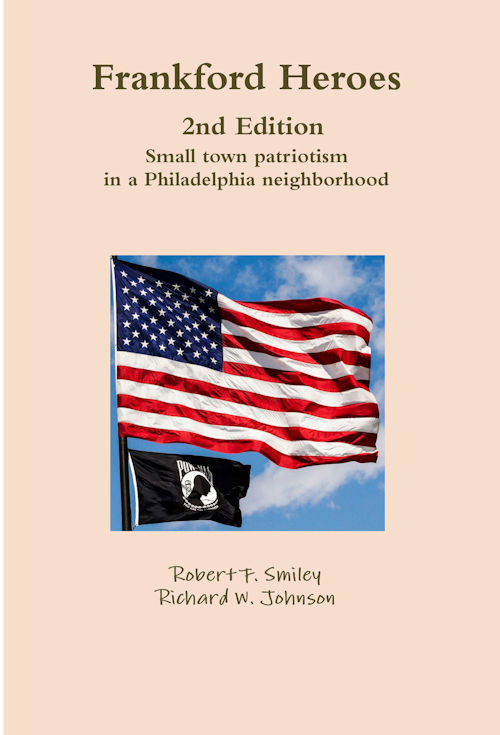Originally published on www.destinationfrankford.com
Charlie Abdo’s first experience with Frankford started when he bought the Seale Tite building on Tackawana Street in 2004. Since then, the developer has moved on to re-purpose the Globe Dye Works at Torresdale and Kinsey Streets and may have found himself on the edge of a new revolution that is sweeping Philadelphia’s former industrial neighborhoods. One that is re-purposing them and helping to shape Philadelphia’s future.
“Live-work as a way of building is just getting started” Abdo says. And he should know. He has 30 years experience in building around Philadelphia. He built in Northern Liberties and Fairmount in the mid-70s. His restaurant fit outs include North Star Bar in Brewerytown. Rarely touching new construction, he has instead spent his time renovating structures. When asked how he’s been able to stick around for so long he said, “It’s really not that hard, you just have to stay ahead of the trends. You can tell where the pressure is going, up to Fairmount back then, now up through Northern Liberties into Kensington.” He’s followed his instincts to Frankford. His advice has been sought by journalists weighing the change occurring in neighborhoods like Frankford, ones which have a character of industry that keeps them chained to the past but once again have an opportunity to be useful.
The Globe Dye Works was just shutting down it’s operation as a family run yarn dyer in 2005 when Abdo brought his tenant from Fishtown, set designers Erector Sets, up to the Seale Tite factory (Brendan Kilroy, owner of Erector Sets and future partner in the Globe Dye Works has already been profiled on Destination Frankford). “The first few times we went and saw it, it was more of a curiosity” says Abdo. It wasn’t until a few visits in that he and the partners started seriously considering making a go at it. But more, that curiosity required he own it. “I’m not an antique collector, more like a collector of stuff. When we first bought it, it still had all of the machinery, I had this urge to just leave everything as it is.” Abdo was looking for a project, his options, it seemed were another contracting opportunity, or to do something “significant”. He considers the Globe Dye Works a creative endeavor.
But Abdo is not just a landlord. I’ve been covering the Globe Dye Works from its new beginning and the running theme of collaboration with the tenants is something I’ve heard over and over. As the Globe has seen new life, its very tenants have had a hand in making the window frames, rails, stairs, and fixtures for the complex. But Abdo says the collaborations aren’t his doing, “the tenants feed off each other actually”.
Abdo is excited about the catering space coming soon to the huge three story high boiler room, “I’m getting half a dozen emails a week with people asking if we do weddings. People aren’t getting married in places their mothers would like them to”. Charlie makes a point of talking about future interactions the catering space could have with his tenants.
The Globe is about 60% done, not including the coming catering venue. Abdo is also interested in put up 15 to 20 live/work spaces in the Globe building on the corner of Kinsey Street and Torresdale Avenues. According to Abdo, the notion of live/work as an opportunity for artisans to practice their craft has been gaining traction in the city during the last couple of years. And this is a noted difference compared to artists setting up a work room in their apartment. It’s cheaper to rent than to own your own building but makers want the benefits that come from having a factory, like strengthened floor, electrical, and service elevators. They also need a community.
Abdo says that’s what is being looked at in Philadelphia’s former industrial neighborhoods. And he should know, he sits on the zoning committees for both the Northern Liberties and South Kensington neighborhood organizations. “The city has written ‘live/work’ into the new zoning code, they’re still trying to define it, but it’s there,” Abdo says. On Front Street under the El, Abdo says “that’s where live/work works the best. If you can make noise anywhere, you should be able to make it next to the El.”
In Northern Liberties, and Kensington, they’re always talking live/work. It calls for a special kind of building, a special kind of place. These craftsmen in his buildings make noise. This is a model he’s pioneering with the Globe Dye Works. The Department of Commerce is bringing 15 people to the Globe. Abdo says “they like our model, they think it has potential, they’re coming to see what we have”.
It’s easy to look at the Globe and see a diverse mix of tenants doing their own thing, but behind it is the guiding vision of Abdo. “You can’t ignore the art and artist aspect of the complex. The art has it’s place but I see this as a place for commerce. Money is made here. Jobs are created here”. That the Globe has tenants making guacamole, coffee, cupcakes and chocolate is no accident. These small batch makers, wholesalers, people doing retail, there seems to be an attraction to Abdo as a landlord. He’s been fitting out restaurants for the last 30 years. It seems that fascination with the industry informs the search for tenants.
He says he likes to nurture these businesses. “When I go home, I don’t want to talk to anyone, but here, I like to hang out, help the tenants with fit outs, give any business advice” he has acquired.
Charlie Abdo is one of a few handful of developers tackling the remaking of Philadelphia’s industrial past and we are lucky to have him doing it in Frankford.
by Jim Smiley<@jimRsmiley>, web editor The Frankford Gazette








